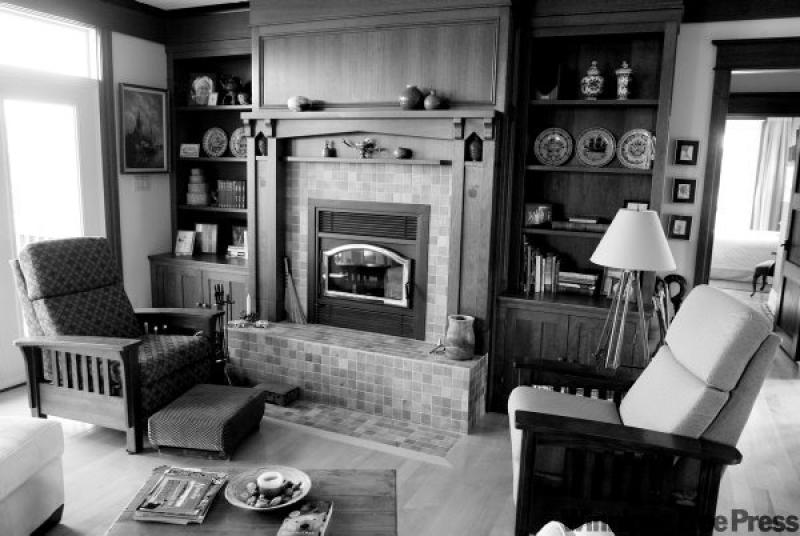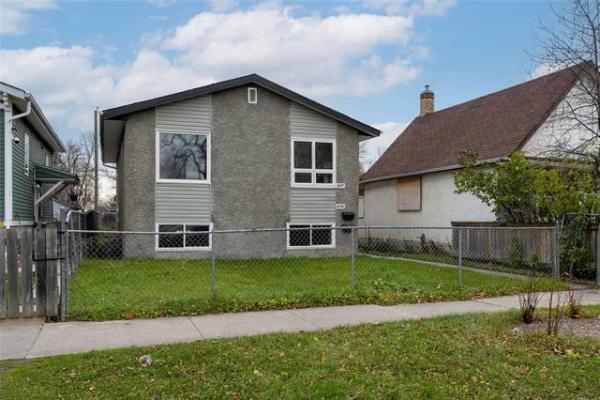

As co-owners of Mountain Orchards and Mountain Moulding Ltd., two thriving businesses located next door to the couple's custom bungalow 60 kilometres south of Ottawa, the Lyalls have had a long-standing love affair with apple trees and architectural trim.
Due to the success of their rural-based companies, the Lyalls decided three years ago to build an Arts-and-Crafts bungalow just a short walk through the woods from their 30,000-square-foot factory and nearby orchard.
"We wanted a little separation from the workplace," says Phil, who opened the pick-your-own apple orchard in 1975 with his childhood friend Bob Hobson.
But supporting two growing families on a seasonal business became difficult. In 1987, the enterprising buddies diversified into the moulding industry to supplement their incomes.
Their mill, which employs 10 full-time workers, is now a leading manufacturer in North America of heritage and contemporary mouldings.
It's not surprising that most of the wood used to finish the Lyall house was milled in the sprawling factory. A testament of the owners' affinity for all types of wood, the house is a blended mix of cherry, pine, oak, birch and maple. Even the outside is faced in pine board-and-batten which has been painted a bright cherry red with blue trim.
"We call it the happy house," says Shelley Lyall, a bubbly woman with an infectious smile who chose the vibrant colour scheme to punch up the home's exterior.
Inside, the sunny three-bedroom is all about clean lines, warm woods and capturing calming views of the surrounding 60 acres.
The bungalow is a stark contrast to the nearby 200-year-old farmhouse where the couple lived for more than three decades.
"The old house was so dark," she recalls, while standing in the new living room where sunlight pours through a wall of windows and glass doors across the back of the house. Floors are covered in light maple and all of the interior doors are made of solid cherry topped with deep headers and trimmed with simple mouldings.
Designed by Dave McCord of Solstar Enterprises, the 1,600-square-foot house with walkout basement was built to curb energy consumption. Located just above the water table, the foundation is made of insulated concrete forms and the inside of the deep walls were sprayed with a thick layer of foam insulation that makes them virtually air-tight.
Windows and doorways have been lined up to allow air to circulate easily through the main level, while a ground-source heat pump uses water out of the ground to heat and cool the house.
"We're not burning any carbon fuels," says Phil, who estimates it cost about 15 to 20 per cent more to build the energy-miser home than a conventional house. But he says the long-term benefits will far outweigh the upfront costs.
It may be true that it takes a village to raise a child, but for the Lyalls, it took a close circle of friends to build their dream home.
"It was a community effort," says Lyall, who has known McCord and Richard Christie, the carpenter who completed all of the interior woodwork, for many years.
Set several hundred metres back from the country road, the modest bungalow is both a home and a retreat for the hard-working empty-nesters. Covered porches on three sides allow the couple to escape the sun throughout the day. A southeast-facing balcony off the living room overlooks a deep, man-made pond with a sandy beach and a towering windmill that aerates the water to keep algae at bay.
In the winter, the couple can strap on their cross-country skis and follow a network of trails through the woods that criss-cross their property.
"It's a cottage and home in one," says the family matriarch, who was immediately sold on the open floor plan after visiting a similar bungalow in Almonte designed by Solstar. "I loved it. The layout was so simple."
One of her favourite rooms is the Mission-style kitchen built by Christie. Simple cabinets made of quartersawn white oak with antique-bronze pulls stretch up to the ceiling. A built-in wine rack and matching glass cabinets set into a raised countertop face the dining room table.
"It beats the old farmhouse kitchen," Shelley quips, slowly rubbing her hand down the front of the smooth oak cabinets. Besides the reams of counter space and storage, the best part about the open layout is she can be chopping vegetables at the counter and not miss a beat of the conversation going on in the dining or living rooms.
On quiet mornings, the couple sip their coffee at a small round table tucked into a back corner of the kitchen. Lined from floor to ceiling in rich cherry panelling, the bumped-out breakfast nook is wrapped with windows to offer panoramic views of the woodsy land. It's not uncommon to see a family of mallards swimming on the pond or deer and wild turkeys wandering across the grassy fields.
"In the mornings, I have a hard time peeling myself out of the nook," confesses the avid green thumb who likes to spend her free time dabbling in the flower gardens that skirt the front of the house or making decorative pillows and drapery panels in her basement sewing room. The spacious room doubles as a guest suite when the couple's son or daughter and the grandkids come to visit from Toronto.
The house, which took about nine months to build, is a work in progress. Christie, the mastermind behind the ebony apples on the fireplace surround, recently built an oak entertainment centre to house the TV and video components in the den next to the master bedroom.
The birch vanity in the private master ensuite is still lacking a mirror and there is talk of adding another custom oak built-in in the family room in the basement.
For now, there's a moulding business to run and an apple orchard to ready for another busy season when droves of people from the city will make their annual pilgrimage to pick bushels of MacIntosh, Lobo and Empire apples.
Luckily for these homeowners, the commute to work is only a three-minute walk through the woods. And that makes them happy.
-- Canwest News Service
Finishing Details
Before you head out to the lumberyard to choose wood for your home's interior, there are a few important tips Phil Lyall, co-owner of Mountain Moulding Ltd., says to keep in mind:
Durability: Pine is one of the softest woods available while oak is among the hardest. If you want a distressed look, pine is an affordable option for floors, but hardwoods such as oak or cherry stand up better to wear and tear.
Lasting colour: For dark cabinetry, mouldings and floors, maple and birch are the most difficult to stain without blotching or streaking. Oak stains more evenly. If left natural, pine, birch and maple will yellow over time and cherry turns darker and richer.
Grain or no grain: Again this is a preference thing, but red oak has the most open, coarse grain while birch and maple are finer with a tight, even grain.
Cost factor: Finger-joint pine is about the cheapest wood, while cherry and walnut are among the most expensive, costing two to three times more than paint-grade pine.
Mix and match: Go ahead and combine various woods throughout your house, but for consistency, keep the profiles of your mouldings similar. Otherwise, rooms will look disjointed and choppy.




